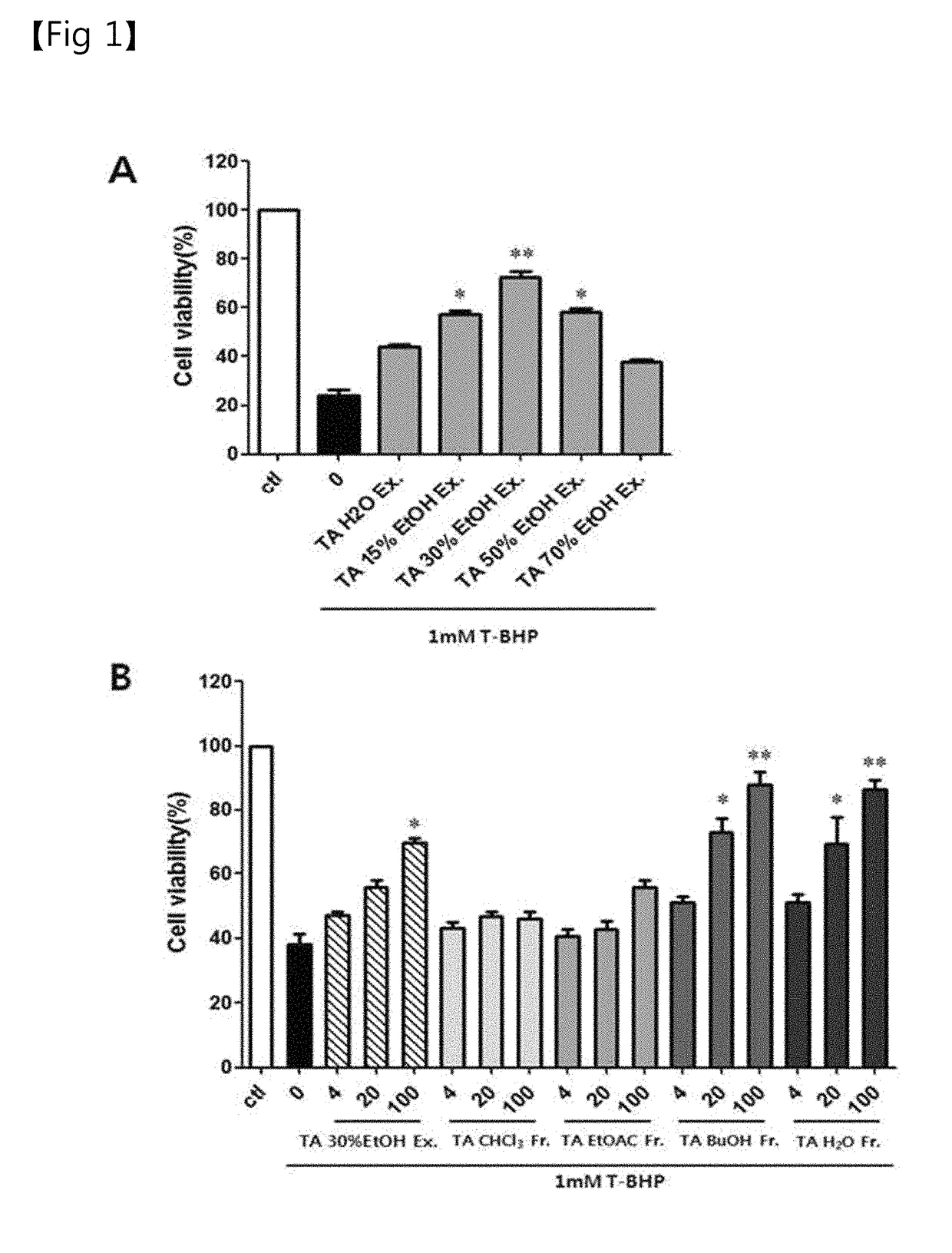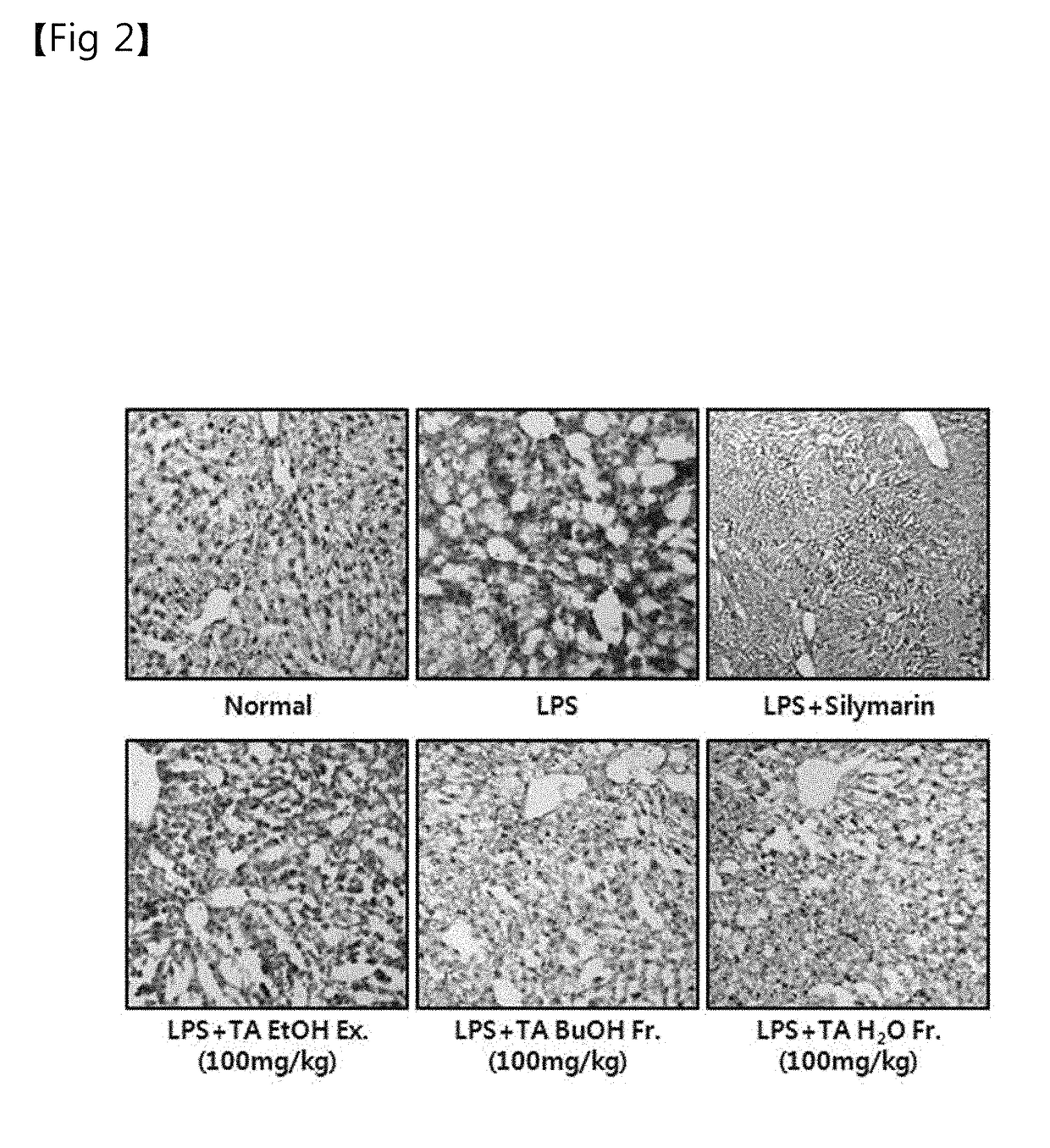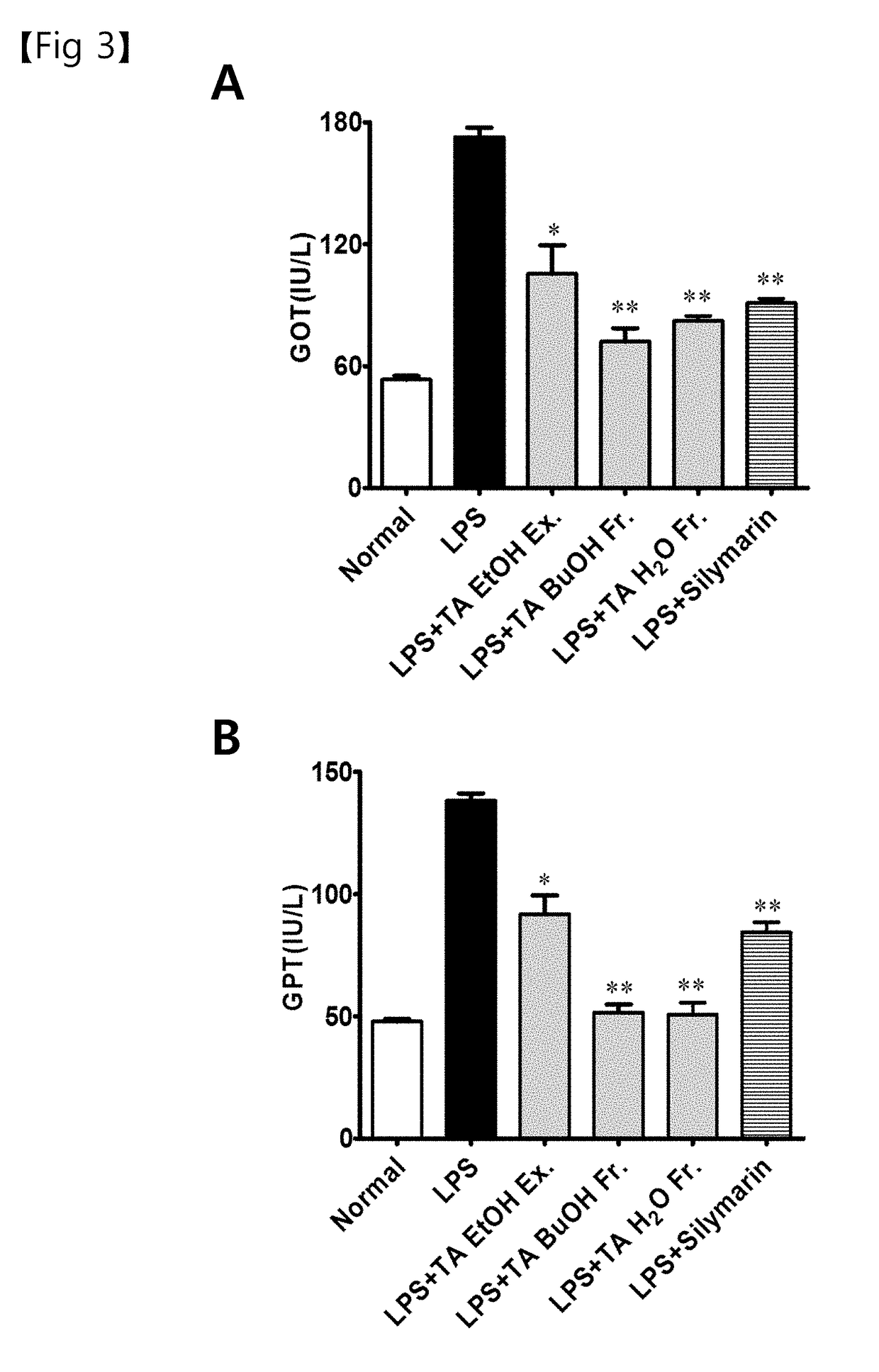Method for preventing, improving or treating liver disease
a liver disease and liver tissue injury technology, applied in the field of liver disease prevention, alleviation or treatment, can solve the problems of liver injury, liver fibrosis, liver inflammation, etc., and achieve the effect of improving liver tissue injury and improving liver injury
- Summary
- Abstract
- Description
- Claims
- Application Information
AI Technical Summary
Benefits of technology
Problems solved by technology
Method used
Image
Examples
example 1
Preparation of Triticum aestivum Lamarck Leaf Extracts
[0068]Triticum aestivum Lamarck was supplied from the National Institute of Food Science and sprouted and grown on sterile peat moss for germination in organic farming at a constant temperature (average 20±2° C.). For 2 to 3 weeks after germination, Triticum aestivum Lamarck leaves were harvested, freeze-dried, and then pulverized to a predetermined size to give a powder. Each 50 g of the powdered Triticum aestivum Lamarck freeze-dried sample was heated with shaking at 50° C. for 2 hours in each 500 ml of purified water and 15, 30, 50, and 70% (v / v) ethanol, respectively, to give extracts. Then, the resulting extracts were filtered, concentrated under vacuum with a rotary evaporator (N-1000, EYELA, Tokyo, Japan), and freeze-dried to give 5.64 g of water extract of Triticum aestivum Lamarck leaves and 8.75 g, 10.54 g, 16.23 g and 16.85 g of ethanol extracts of Triticum aestivum Lamarck leaves with different concentrations of ethan...
example 2
Preparation of Triticum aestivum Lamarck Leaf Fractions
[0069]10 g of the 30% ethanol extract prepared in Example 1 was dissolved in 100 ml of distilled water, and then the chloroform (CHCl3) layer was isolated and concentrated under reduced pressure to give 0.63 g of the chloroform fraction of Triticum aestivum Lamarck leaves. Ethyl acetate (CH3COOC2H5) and butanol (n-butanol, C4H9OH) were sequentially added to the remaining water layer and then fractionated in the same manner as the chloroform layer to give 1.25 g of the ethyl acetate fraction of Triticum aestivum Lamarck leaves and 3.12 g of the butanol fraction of Triticum aestivum Lamarck leaves, and 4.57 g of the water fraction of Triticum aestivum Lamarck leaves.
example 3
Analysis of the Effects of Triticum aestivum Lamarck Leaf Extracts and Fractions Thereof on the Improvement of Hepatocyte Injury in HepG2 Cell Lines
[0070]3-1. Culture of HepG2 Cells
[0071]HepG2 cells, a liver cancer cell line, were cultured in DMEM (Thermo Scientific Hyclone) containing 10% fetal bovine serum, 1% penicillin (100 units / ml), and streptomycin (100 μg / ml) in an incubator at 37° C. and 5% CO2.
[0072]3-2. Effects of Triticum aestivum Lamarck Leaf Extracts and Fractions Thereof on the Improvement of Hepatocyte Injury Induced by Tertiary Butyl Hydroperoxide
[0073]In order to analyze the effects of the Triticum aestivum Lamarck leaf extracts and fractions thereof on the protection of hepatocytes, the effects of tertiary butyl hydroperoxide, which causes oxidative stress, on cell damage were analyzed. HepG2 cells cultured in Example 3-1 was seeded in a 48-well plate at 5×104 cells / well and maintained for 24 hours. Then, the Triticum aestivum Lamarck leaf extracts (the water extr...
PUM
 Login to View More
Login to View More Abstract
Description
Claims
Application Information
 Login to View More
Login to View More - R&D
- Intellectual Property
- Life Sciences
- Materials
- Tech Scout
- Unparalleled Data Quality
- Higher Quality Content
- 60% Fewer Hallucinations
Browse by: Latest US Patents, China's latest patents, Technical Efficacy Thesaurus, Application Domain, Technology Topic, Popular Technical Reports.
© 2025 PatSnap. All rights reserved.Legal|Privacy policy|Modern Slavery Act Transparency Statement|Sitemap|About US| Contact US: help@patsnap.com



